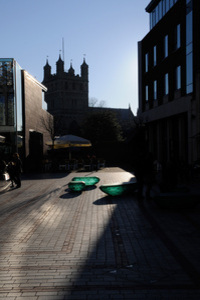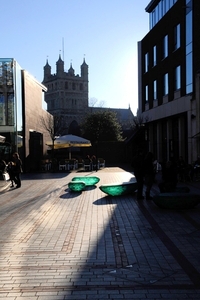Dark Image Enhancement: Channel Division
I’ve been busy for a while working in some research topics. One of those produced some results, and the final product is a paper! (Ok, it is exciting for me )
Channel Division
I designed and created the Channel Division algorithm for dark image enhancement. So, the main idea of the algorithm is to process the image, check for its contents, and build a transformation function according to such context. Thus, the algorithm is context-aware, in the sense that it adapts itself to each image.
Some results:
 |
 |
 |
 |
| Original | Channel Division |
Note that the enhancement method adapts to different images, and reveals the details in the dark regions. At the same time, it maintain the colors and tries to avoid artifacts.
Paper information
Abstract—Current contrast enhancement algorithms occasionally result in artifacts, over-enhancement, and unnatural effects in the processed images. These drawbacks increase for images taken under poor illumination conditions. In this paper, we propose a content-aware algorithm that enhances dark images, sharpens edges, reveals details in textured regions, and preserves the smoothness of flat regions. The algorithm produces an ad hoc transformation for each image, adapting the mapping functions to each image’s characteristics to produce the maximum enhancement. We analyze the contrast of the image in the boundary and textured regions, and group the information with common characteristics. These groups model the relations within the image, from which we extract the transformation functions. The results are then adaptively mixed, by considering the human vision system characteristics, to boost the details in the image. Results show that the algorithm can automatically process a wide range of images—e.g., mixed shadow and bright areas, outdoor and indoor lighting, and face images—without introducing artifacts, which is an improvement over many existing methods.
The bibliography (human readable):
Ramirez Rivera, A.; Ryu, B.; Chae, O.; , “Content-Aware Dark Image Enhancement through Channel Division,” Image Processing, IEEE Transactions on , vol.21, no.9, pp.3967-3980, Sept. 2012
doi: 10.1109/TIP.2012.2198667 (IEEExplore)
And BibTeX for those who may need it:
@ARTICLE{RamirezRivera2012,
author={Ramirez Rivera, A. and Ryu, B. and Chae, O.},
journal={Image Processing, IEEE Transactions on},
title={Content-Aware Dark Image Enhancement through Channel Division},
year={2012},
month={sept},
volume={21},
number={9},
pages={3967--3980},
keywords={},
doi={10.1109/TIP.2012.2198667},
ISSN={1057-7149},}
Database
Also, we created a small database for the algorithm testing. It contains 10 different images in difficult lighting conditions. If you are interested, you can download it here.





Hey, i am too trying to sort it out. Help me plz. i need some ideas.
Hello Iam working on it. I need some idea to implement it